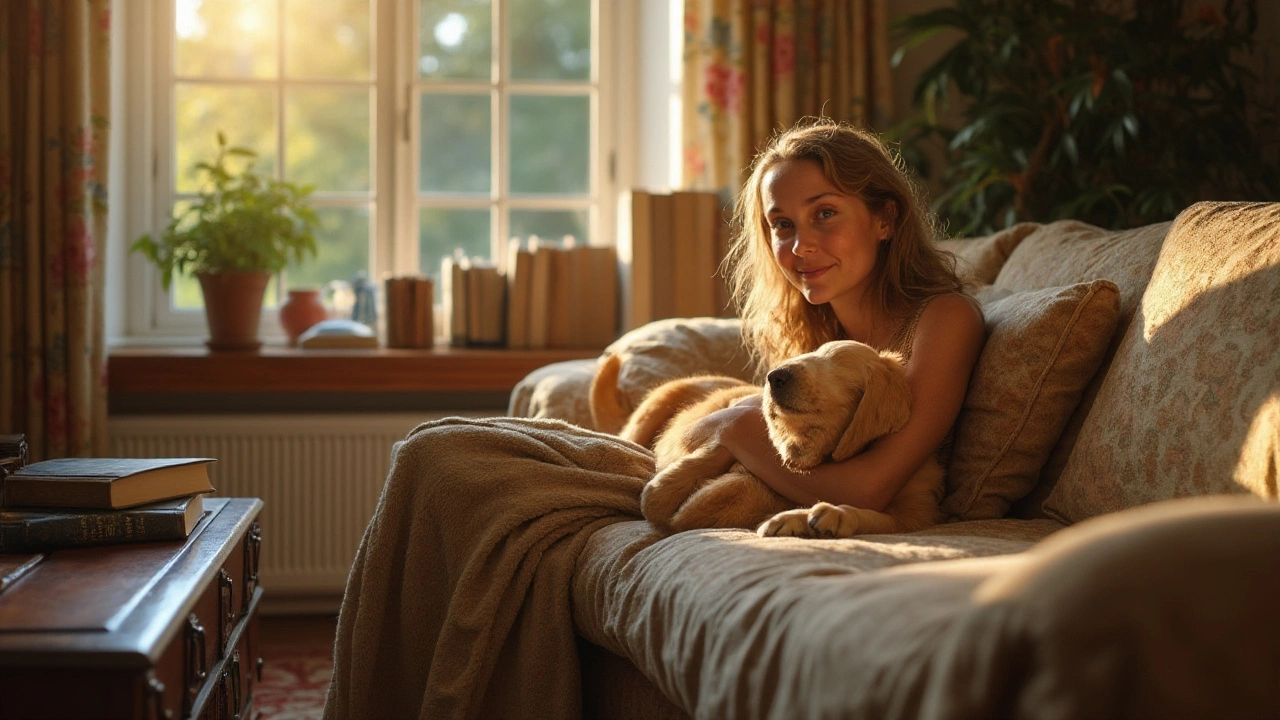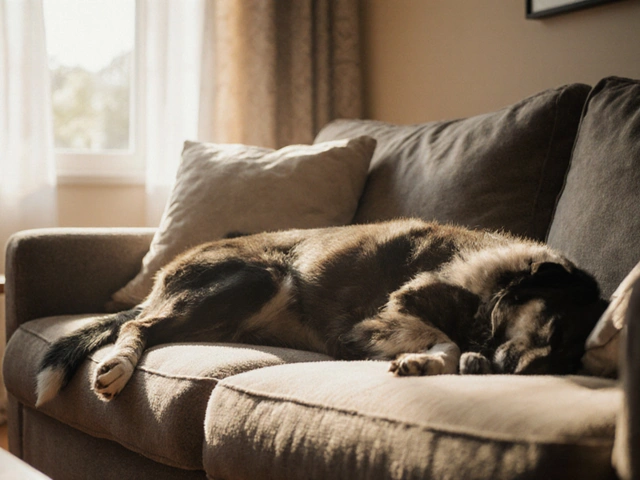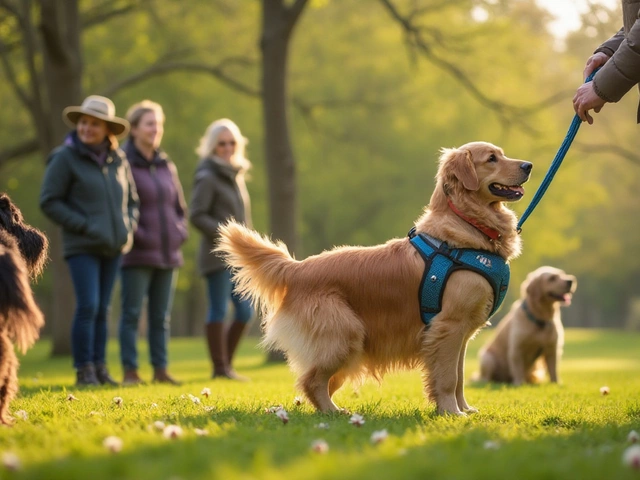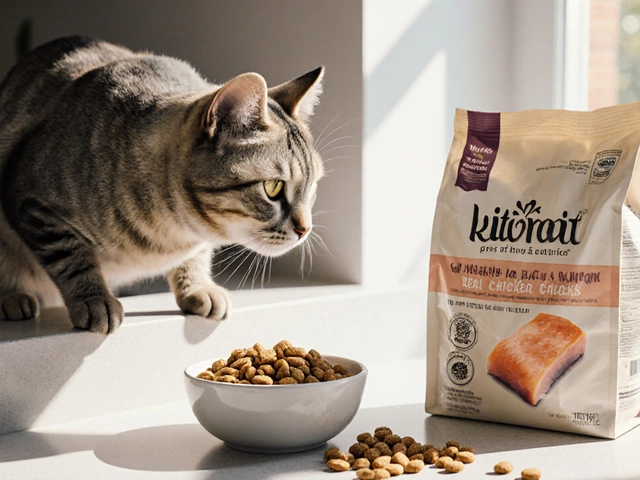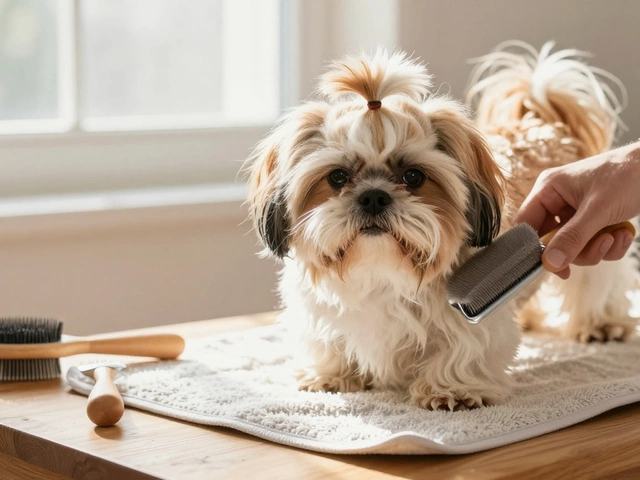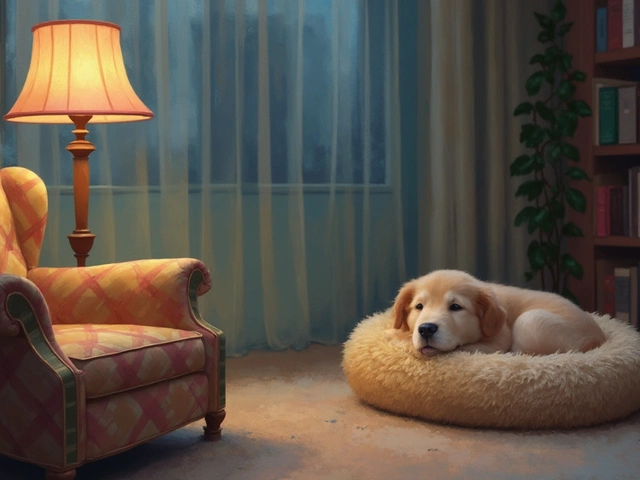Cuddling your puppy on the couch can feel like one of the warmest moments in pet ownership. That fuzzy little creature nestled beside you is not just adorable but can also be a part of nurturing a strong bond. Yet, like all things enchanting, this cozy practice comes with its own set of considerations — both for you and your four-legged friend.
Questions often arise about hygiene, furniture care, and training when it comes to puppies claiming their spot on the couch. While those puppy dog eyes can be hard to resist, particularly after a long day, it's worth stepping back to consider both your and your pet's comfort in the long term.
As we explore this topic, tips, and insights will be shared to ensure that couch times are joyous, safe, and involve the right balance of snuggling and training.
- The Comfort of Cuddling
- Potential Downsides
- Training Your Puppy
- Choosing the Right Toys
- Balancing Couch Time
The Comfort of Cuddling
There's something undeniably magical about the act of cuddling with your puppy on the couch. For puppies fresh into a new home, these moments of warmth and closeness go a long way in establishing a deep-rooted sense of security. It's within these quiet exchanges that you communicate love, trust, and a sense of belonging without uttering a single word. Puppies, often experiencing the world with heightened senses, find solace in the familiar rhythm of your breath and heartbeat, which echoes the serene environment of their litter.
From a scientific perspective, studies have shown that close physical contact with your pet can lead to the release of oxytocin, often known as the "love hormone", in both humans and animals. This can strengthen the emotional bond between you and your puppy, enhancing mutual trust and affection. This bond becomes vital as your puppy begins to navigate the sometimes overwhelming landscape of their new world. Physical affection, including cuddling, serves as an anchoring experience, reassuring them that they are safe and loved.
"Puppies are much like children in that their need for touch and comfort is essential to their development," says Dr. Emily Sands, a well-regarded canine behaviorist from the University of Edinburgh.While the pleasure of having a little bundle of joy snuggle against you is unparalleled, these moments offer much more than just emotional satisfaction. Consistent cuddling can positively impact your puppy's behavior, potentially leading to calmness and improved sociability. As they recognize the couch as a safe haven, an ever-growing sense of comfort allows them to feel more confident when facing new challenges in both their immediate environment and during future adventures.
Specific routines or cues associated with this practice can also be beneficial. If you always settle in with a favorite toy, a particular blanket or using consistent commands, your puppy will start associating these cues with love and relaxation. This kind of positive reinforcement helps puppies understand routines, thereby easing into training sessions. Importantly, the couch doesn't just have to be a hub for cuddles; it's a space where your pet can develop a tangible sense of routine, finding it easier to transition between play, training, and rest.
Of course, it's crucial to consider that not every puppy might be open to or comfortable with prolonged cuddle sessions. Canine personalities can be as varied and unique as human ones. While some puppies immediately embrace this closeness, others might need time to adjust and comprehend human touch fully. Respecting your puppy's boundaries is as important as introducing them to the joys of closeness and comfort. If your puppy seems hesitant or stressed, gradually introducing different forms of gentle interaction can help bridge this gap without overwhelming their senses.
A well-known fact is that the practice of allowing your puppy to cuddle can extend beyond just the emotional realm. In bustling households, where multiple family members interact with the family pet, being consistent with cuddling rules and times ensures that the puppy doesn't become overwhelmed with stimuli. Over time, creating a harmonious household that respects both animal and human needs is crucial for maximizing the cuddling experience. Cuddling your puppy on the couch isn't just about where they lay, but how they understand their place in your home and heart.
Potential Downsides
Embracing your puppy on the couch is undeniably delightful, but it's important to weigh the potential downsides that accompany this cozy arrangement. One of the primary concerns is hygiene. Puppies, despite their cuteness, can carry dirt and germs from their outdoor adventures back to the couch, which might not be the cleanest situation for your home. Additionally, puppies are notorious for their accidents and, more so when they're in the process of being toilet trained. An unintended mishap can quickly turn your favorite relaxation spot into a cleanup zone.
Behavioral issues can also arise from unrestricted couch privileges. While it's wonderful to have a close bond with your puppy, establishing clear boundaries is crucial. Permitting them to jump onto the couch whenever they fancy can blur lines of authority and discipline. Over time, this unrestricted freedom could lead to a puppy that feels entitled to all furniture without permission, which can be a hard habit to break as they grow. Training your puppy to understand the command to get on and off the couch can be beneficial in asserting your role as the leader while maintaining a strong bond.
The debate of dominance versus cuddles often surfaces among dog owners and experts. As per Dr. Sophia Yin, a renowned veterinarian behaviorist, "Allowing dogs on furniture does not inherently lead to dominance issues; rather, it's the owners' inconsistency in enforcing rules that does."
It's crucial for pet parents to remember that an authoritative yet affectionate approach ensures love without the sacrifice of discipline.
It's also worth noting that not all couches are built to endure the enthusiastic antics of a playful pup. Claw marks, shedding fur, and drool can degrade your furniture over time. Investing in durable, pet-proof furniture covers can mitigate some of these concerns, extending the life of your couch and keeping it in good shape. Regular cleaning, including using upholstery cleaners specifically designed to handle pet-related stains and odors, can ensure your living room doesn't end up smelling like a kennel.
Allergies are another consideration, as having your puppy on the couch regularly can aggravate allergies in sensitive household members. Pet dander is a common allergen, and continuous exposure can lead to sneezes and sniffles. Vacuuming often and maintaining a pet-free zone in certain areas can help in mitigating these symptoms. Incorporating an air purifier can also aid in reducing airborne dander, ensuring a more comfortable environment for all.
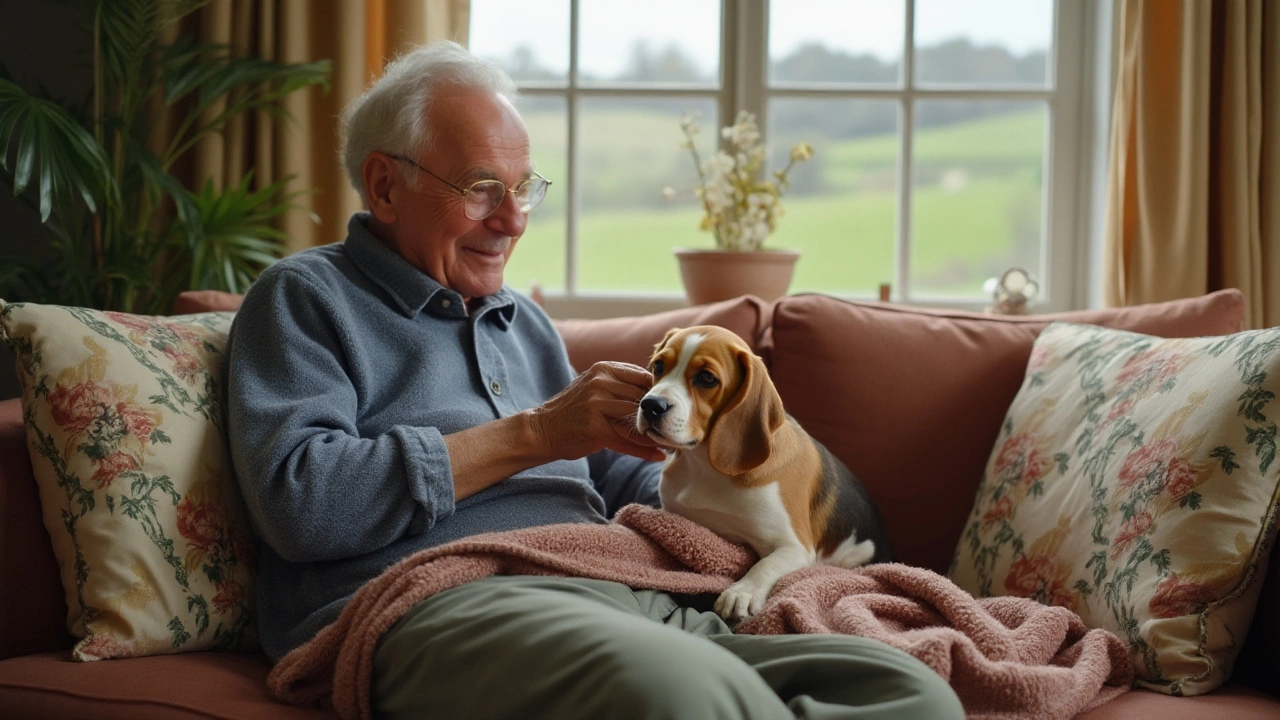
Training Your Puppy
Training your puppy to enjoy couch time responsibly is an essential part of nurturing a harmonious home. It's about striking a balance between allowing a cuddle session and ensuring that your furry friend understands boundaries. Puppies are like sponges, ready to absorb rules, but the key lies in positive reinforcement and consistency. Start by setting the rules early on, and remember, commands like 'up' and 'down' can be very effective. Training isn’t just about discipline; it also involves striking a comfortable balance that works for both you and your puppy cuddling sessions.
A productive training regimen involves patience and a keen understanding of your puppy’s signals. Reward systems play a vital role here. Every time your puppy hops onto the couch upon command, perhaps during specified hours, offer a treat or a gentle pat. Over time, these positive reinforcements condition their behavior, making them look forward to shared moments on the couch. One interesting fact about this approach is the use of distinct verbal cues which, according to several dog trainers, can significantly reduce confusion during couch training.
Notably, it helps to introduce toys into the training mix, which can serve dual purposes. Toys reinforce training while keeping your puppy engaged and off boredom-induced naughtiness. Introduce toys that they can play with on the couch, but only upon invitation. This association teaches them the couch is a special space, reserved for their favorite squeaky toy or cuddle blanket.
According to Dr. Sophia Yin, a notable figure in animal behavior, “Training is a lifelong commitment, and positive reinforcement is key. It builds trust and understanding, which are fundamental to a healthy pet-owner relationship.”
As training progresses, it's vital to observe your puppy's response to commands and rewards. Adjust tactics if they seem unresponsive. Remember, pups have personalities too, and some may take longer than others to understand the nuances of couch rules. Maintaining patience is crucial. Use rewarding drives, like short play sessions after training, to offer them a chance to burn off energy post-training. Balancing training with fun ensures your puppy remains curious and eager to learn, ultimately making puppy bonding time productive and delightful.
Choosing the Right Toys
It’s more than a game when it comes to finding the right toys for your puppy. Toys serve as valuable tools that not only entertain but foster mental and physical development. They are crucial in ensuring that your puppy’s energy is directed toward approved activities rather than your treasured couch cushions. Puppy toys come in various shapes and purposes, from the teething rings that soothe growing pains to the intelligence-enhancing puzzles that challenge a clever pup’s mind. Considering your puppy's age, breed, and temperament can help you make the best choice amongst the multitude of options available on the market. Puppies who engage with appropriate toys usually display better behavior as they are occupied in learning and development rather than causing mischief.
One strategy to ensure that your puppy gravitates towards their toys rather than your household belongings is to have a rotation. Frequently changing the toys available keeps them interested and minimizes boredom, which is often the root of destructive behavior. Experts suggest rotating toys every few days to keep them exciting. Another tip is to include a variety of toys that serve different functions — from plush toys for comfort to durable ones for those aggressive chewers. According to the American Kennel Club, ‘Toys are more than playthings; they are a source of comfort and help prevent trouble.’
“The choice of toy can often be as critical as the behavior you are hoping to shape,” says Jane Leon, a renowned pet behaviorist.
As much as size matters with pets, it does with toys too. Always opt for toys that match your puppy’s size. A toy that's too small might be a choking hazard, while an overly large one could cause frustration. Additionally, materials play an essential role. Typically, non-toxic, durable materials like rubber or high-quality plastic are your best bet, as these withstand the rigor of enthusiastic play. Rawhide toys can be great as rewards, but supervision is recommended since they can pose intestinal risks if ingested in large chunks.
The financial aspect of choosing toys should not be ignored. You may assume the most expensive products are the best; however, this isn't always the case. Economical toys can be both effective and safe if selected with care and diligence. For instance, knotted ropes often prove to be a cost-effective option that fulfills an array of needs like tug play, teething relief, and even promoting oral health for your puppy. Multipurpose toys can deliver more value, keeping things lively without breaking the bank.
To gauge which toys hit the right note with your puppy, carefully observe their interaction with the toys. Puppies naturally exhibit certain preferences — some might prefer toys they can fetch and retrieve, while others may have a penchant for squeaky toys that capture their attention with sound. Recording your puppy's preferences can guide future purchases. Begin by offering a diverse selection and then adjust based on observation.
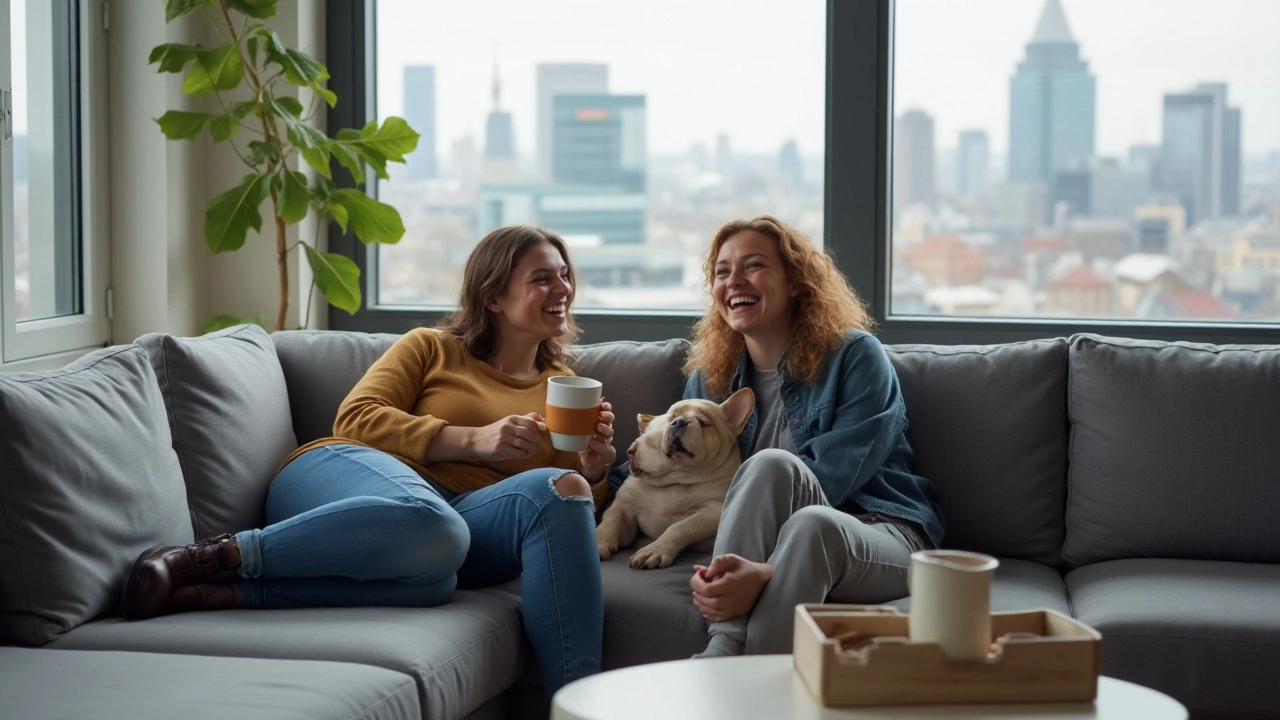
Balancing Couch Time
Finding the right balance between allowing your puppy to enjoy couch cuddles and maintaining good habits is crucial for a healthy puppy-owner relationship. While many pet owners find immense joy from sharing the couch with their furry companion, it's important to set boundaries to avoid behavioral issues in the future. Puppies, much like children, thrive on consistency and clear guidelines, which means teaching them when it's appropriate to hop onto the couch and when to stay put. Establishing these boundaries early on can help prevent your puppy from jumping onto the couch whenever they please, which is not always desirable, especially with guests or during mealtime.
One way to strike an appropriate balance is by creating a specific cue or signal that lets your puppy know when it's okay to join you. This could be a gentle pat on the sofa or a verbal command that they quickly learn to associate with couch time. It's also useful to allocate specific times for this activity, such as after dinner or in the evenings, so your puppy can anticipate when couch cuddles are likely to happen. This introduces predictability and structure, which are both comforting for young animals still learning about boundaries and rules within your home.
Training Your Puppy to associate certain commands with behaviors also spills over into many other aspects of discipline, making the couch a handy training ground for reinforcing good habits. Teaching your pup that they can only climb onto the couch when invited can minimize unwanted behaviors, such as climbing onto forbidden furniture or interrupting when you're busy. It's essential to remember that positive reinforcement is key; reward your puppy with treats, praise, or toys when they follow the rules effectively.
However, as much as organization is essential, it's equally important to factor in personal preferences and lifestyle. Some dog owners are quite content with their pets sharing any space, anytime, whereas others prefer more clearly defined rules. Consider what works best for you, your lifestyle, and your pet. Consistency is the cornerstone of effective training, and consistent boundaries combined with affection can create a harmonious living environment. Not every method works for every household; hence, it becomes vital to observe and adapt as per what fits you and your furry friend.
"Training a puppy not only means teaching commands but also teaching how to be a happy member of your household," suggests Audrey Fick, a professional dog trainer with over two decades of experience.
To assist with this, having plenty of puppy toys available on or near the couch can help redirect energy. When snuggle time is up, make sure your puppy has something to engage with that keeps them off the couch. Here, toys that they can gnaw and chew are particularly effective, as they cater to their natural need to bite, which is especially significant during teething phases. This eliminates the necessity of constant monitoring and ensures your furniture doesn't become a constant battlefield of wills.
In understanding how to balance couch time, acknowledging differing breeds and temperaments plays a role. Some puppies are naturally more independent, while others crave frequent closeness and reassurance. It becomes an intrinsic task to evaluate what helps your puppy feel secure yet independent, and what promotes a sense of belonging without dependency.
Creating the right equilibrium between discipline and indulgence with your puppy can set the tone for a lifelong companionship where respect and affection thrive together. Such an approach does wonders for both pet parents and puppies, ensuring everyone looks forward to quality time on the couch while embracing the joys and responsibilities of pet ownership. Plus, remember: a structured lifestyle for your puppy can significantly enhance your living experience and foster a strong, lasting bond.

